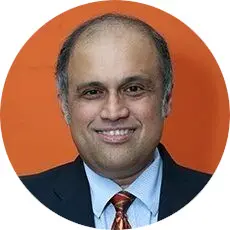
In our society’s current economic landscape, a pervasive and pressing issue looms large – the global retirement inequality crisis. A confluence of factors, from a shrinking labor force to rising income inequality, are all contributing to the rise of retirement inequalities, especially as fewer people are contributing to pension systems. Yet, the need to ensure financial security for retirees remains paramount and critical.
Over the past four decades, a pervasive trend of rising income inequality has swept across countries, with the income share of the top 10 percent increasing notably in the United States and major emerging economies. This growing economic gap, coupled with a shrinking labor force in many advanced economies, poses a critical challenge. According to a report by the U.S. Government Accountability Office (GAO), disparities in income and wealth among older Americans are significantly wider than those in Canada, Germany, and the United Kingdom. For example, in 2007, the median income of high-income older households in the United States was about 12 times greater compared to about 6 times in Germany and about 10 times in the United Kingdom.
The U.S. alone faces a retirement savings deficit estimated between $6.8 and $14.0 trillion, signaling dangerously low savings for retirees. According to the Organization for Economic Co-operation and Development (OECD), about 23% of Americans over the age of 65 live in poverty, and just three countries have worse income inequality among seniors.
The GAO also reported that in 2019, only 1 in 10 low-income households had a retirement account balance, compared to 9 in 10 high-income households. This disparity has increased over time, as in 2007, 1 in 5 low-income households had a retirement account. The GAO also found racial disparities in retirement accounts. African American workers aged 51 to 64 are the least likely among all racial and ethnic groups to have a retirement account. African Americans aged 65 and up tend to rely more heavily on Social Security and are more than twice as likely to live in poverty.
The Federal Reserve’s 2019 Survey of Consumer Finances shows that retirement account ownership and median balances are lower for African American and Hispanic families at all ages ($20,000 vs upwards of $60,000 for some other demographics). Oftentimes, these disparities can reflect differences in wages, employer matching, and access to employer-sponsored plans. Due to several of these kinds of disparities, reports suggest that 54% of African Americans do not have enough savings to retire.
There are also inequities when it comes to gender and other demographic factors. For instance, according to Morgan Stanley, women have approximately 30% less saved by the time they retire, compared to their men counterparts.
According to the U.S. Census Bureau, the median value of 401(k)-style accounts was $30,000 and the median IRA or Keogh value was $30,820. There were substantial inequalities among those who own retirement accounts, with baby boomers being the most likely to own at least one type of retirement account (66.2%), followed by Generation X (56.1%), Millennials (49.5%), and Generation Z (the least likely).
Currently, it is believed that Gen Z will need approximately $3 million saved in order to have a 20-year-retirement, but yet, according to several surveys, nearly 41% of Gen Z respondents have no retirement savings in the bank and make up the group least motivated to start saving.
It is incredibly important that we understand the prevalence and status of the retirement inequality in the US. This gap is only set to grow further apart in the coming years, especially as inflation and cost of living continues to skyrocket. Collaboration between private and public sectors is key, as well as public policy related efforts (many, such as optimal savings policies and universal retirement plans, are already in discussions and underway). But what’s also equally important is that as a collective society, we each work to make positive change to eliminate these intrinsic disparities, and also plan ahead to make the most of and take control of our savings and financial well-being for retirement, with a hope to build a better future.


 Raj Mehta – Financial Education Instructor
Raj Mehta – Financial Education Instructor